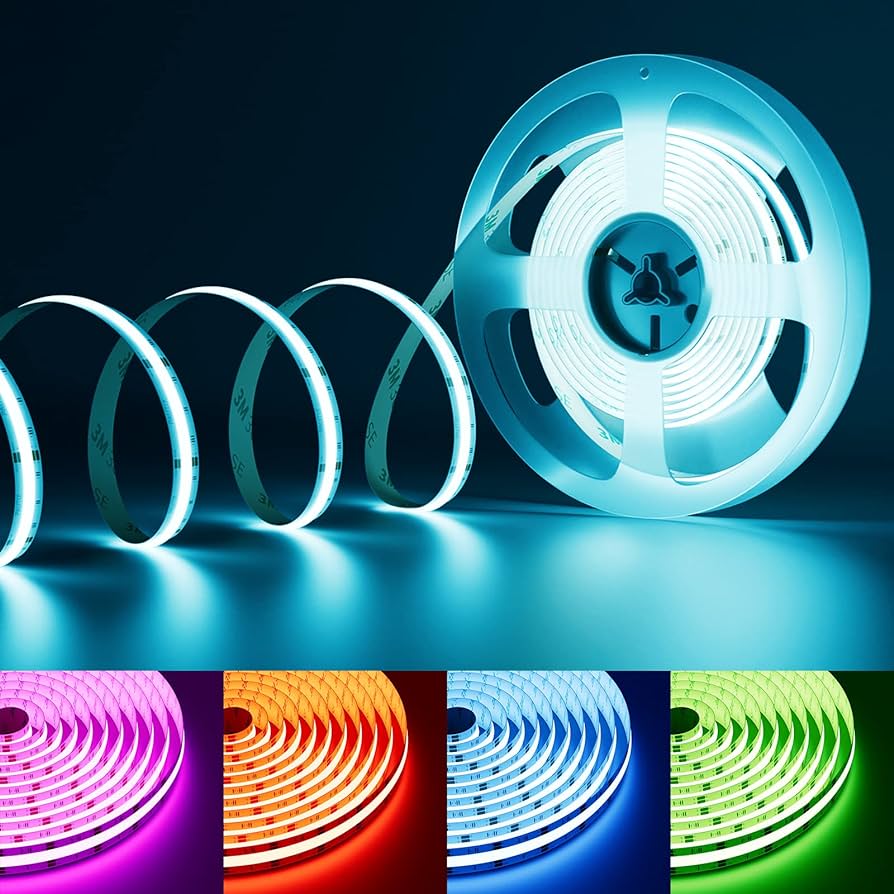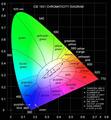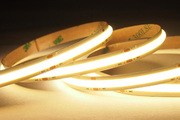Analyzing the heat dissipation performance of LEDs based on COB technology

With the continuous innovation of LED packaging technology and the implementation of energy conservation and emission reduction policies at home and abroad, the proportion of LED light source applications in the lighting field is increasing, and new packaging forms are constantly being introduced. The performance of LED in terms of heat dissipation, light efficiency, reliability, and cost-effectiveness is still a focus of attention. If there is no breakthrough in these, or if new products other than LED can make breakthroughs in the future, then LED may not be the choice in the lighting field.
COB (Chip on Board) is an LED packaging product launched by the industry under this background. Compared with traditional discrete LED packaging products, it has better primary heat dissipation capacity and high-density luminous flux output. When designing the LED packaging structure, the chip junction temperature should be reduced as much as possible. COB packaged chips have the shortest heat dissipation path and can quickly transfer the heat of the working chip to the metal substrate and then to the heat sink. Therefore, COB has better heat dissipation capabilities than traditional discrete component assembly.
The current material choices for COB metal substrates include copper, aluminum, aluminum oxide, aluminum nitride, etc. In terms of comprehensive cost, heat dissipation capacity, corrosion protection, etc., aluminum is mainly chosen as the metal substrate for production. With the continuous innovation of LED packaging technology and the implementation of energy conservation and emission reduction policies at home and abroad, the proportion of LED light source applications in the lighting field is increasing, and new packaging forms are constantly being introduced.
The performance of LED in terms of heat dissipation, light efficiency, reliability, and cost-effectiveness is still a focus of attention. If there is no breakthrough in these, or if new products other than LED can make breakthroughs in the future, then LED may not be the choice in the lighting field.
COB (Chip on Board) is an LED packaging product launched by the industry under this background. Compared with traditional discrete LED packaging products, it has better primary heat dissipation capacity and high-density luminous flux output. When designing the LED packaging structure, the chip junction temperature should be reduced as much as possible. COB packaged chips have the shortest heat dissipation path and can quickly transfer the heat of the working chip to the metal substrate and then to the heat sink. Therefore, COB has better heat dissipation capabilities than traditional discrete component assembly. The current material choices for COB metal substrates include copper, aluminum, aluminum oxide, aluminum nitride, etc. In terms of comprehensive cost, heat dissipation capacity, corrosion protection, etc., aluminum is mainly chosen as the metal substrate for production.
Analysis of the heat dissipation performance of LEDs based on COB technology from 3 angles
The power loss of LED devices during operation is usually expressed in the form of heat dissipation. Any part with resistance becomes an internal heat source, causing the heat density to rise sharply, so the temperature of the device itself also rises, and the surrounding ambient temperature also rises. Affects the internal temperature, thereby affecting the reliability, performance and life of the LED. Research shows that as the temperature increases, the chip failure rate tends to increase. Therefore, reliable thermal design and effective thermal control measures for LED packaging are the keys to improving its reliability.
In the electronics industry, when the ambient temperature of a device increases by 10°C, its failure rate often increases by an order of magnitude. This is the so-called "10°C rule." Most of the methods currently used are based on the material of the circuit board, and some materials with high thermal conductivity and stability are selected, such as copper, aluminum, ceramics, etc. But it is not enough to simply improve the heat dissipation problem through the circuit board. Other thermal design methods must be used to improve the heat dissipation performance of LEDs.
Cooling technology
Any electronic device and circuit is inevitably accompanied by the generation of heat. To improve its reliability and performance, the heat must be minimized, and the use of appropriate heat dissipation technology has become the key.
The transfer of energy between matter itself or when matter comes into contact with matter is called heat conduction. This is the most common form of heat transfer, in which particles with lower energy and particles with higher energy are in direct contact and collide to transfer energy. Relatively speaking, heat conduction methods are limited to solids and liquids, because the molecular composition of gases is not very close, and the transfer of energy between them is called thermal diffusion.
The basic formula for heat conduction is:
Q=K&TImes;A&TImes;ΔT/ΔL (1)
Among them, Q represents heat, which is the heat generated or conducted by thermal conduction; K is the thermal conductivity coefficient of the material. The thermal conductivity coefficient is similar to the specific heat, but there are some differences from the specific heat. The thermal conductivity coefficient is inversely proportional to the specific heat. The higher the thermal conductivity coefficient. , the value of its specific heat will be lower. For example, the thermal conductivity coefficient of pure copper is 396.4, and its specific heat is 0.39; in the formula, A represents the heat transfer area (or the contact area of two objects), ΔT represents the temperature difference between the two ends; ΔL is the distance between the two ends . Therefore, we can find from the formula that the magnitude of heat transfer is directly proportional to the thermal conductivity coefficient and heat transfer area, and inversely proportional to the distance. The higher the heat transfer coefficient, the larger the heat transfer area, and the shorter the transmission distance, the higher the energy of heat conduction and the easier it is to remove heat.
LED heat dissipation performance and packaging
As a new generation of light source, LED is gradually being used in general lighting. Its most basic optical requirement is luminous flux. Currently, there are two ways to improve LED luminous flux, namely increasing chip brightness and densely arranging multiple chips. These methods require input. Higher power energy, but only a small part of the energy input into the LED will be converted into light source, and most of it will be converted into heat energy. When the doubled current is sent into a single package, the heat generation will naturally double, so in such a small heat dissipation As the area decreases, the heat dissipation problem will gradually worsen.
Like traditional light sources, LEDs also generate heat during operation, and the amount of heat depends on the overall luminous efficiency. Under the action of external electric energy, the radiation recombination of electrons and holes produces electroluminescence. The light radiated near the PN junction needs to pass through the semiconductor medium and packaging medium of the LED chip itself before it can reach the outside world. Taking into account current injection efficiency, radioluminescence quantum efficiency, chip external light extraction efficiency, etc., only about 30% to 40% of the input electrical energy is finally converted into light energy, and the remaining 60% to 70% of the energy is mainly in the form of lattice vibration caused by non-radiative recombination. form into heat energy. The increase in LED chip temperature will enhance non-radiative recombination, further weakening the luminous efficiency and shortening the lifespan. The heat dissipation technology used in LED lights must be able to effectively reduce the thermal resistance from the PN junction of the light-emitting diode to the environment, so that the PN junction temperature of the LED can be reduced as much as possible to extend the life of the LED light.
This is the relationship between the light attenuation and junction temperature of Lumidleds1W LED under the condition of constant operating current. It can be seen that the higher the junction temperature, the faster the luminous flux attenuates and the shorter the life span.
LED heat dissipation
The thermal performance parameters of LEDs mainly refer to junction temperature and thermal resistance. The junction temperature of the LED refers to the temperature of the PN junction, and the thermal resistance of the LED generally refers to the thermal resistance between the PN junction and the surface of the casing. The junction temperature is a parameter that directly affects the working performance of the LED, and the thermal resistance is a parameter that indicates the heat dissipation performance of the LED. The smaller the thermal resistance, the easier it is for the heat of the LED to be conducted out of the PN junction. The lower the junction temperature of the LED, the higher the continuous light efficiency and the longer the life of the LED.
When the PN junction temperature of the LED increases, the forward conduction voltage drop of the LED decreases, which means that once the LED in the loop experiences excessive temperature rise, the PN junction's response to this will further increase the temperature of the LED. If the LED If the temperature of the chip exceeds a certain value, the entire LED device will be damaged. This temperature value is the critical temperature. The critical temperature of LEDs with different packaging materials is different. Even if they are the same material, packaging process and other factors will affect the critical temperature. Different from traditional light sources, the printed circuit board is not only the power supply carrier of LED, but also the heat dissipation carrier. Therefore, the heat dissipation design of the printed circuit board (including pad settings, wiring and plating, etc.) is particularly important for the heat dissipation performance of LEDs.
The impact of packaging process on heat dissipation performance
Currently, the packaging of LED chips on the market is mainly single-chip packaging. If a single package is only used in 1 to 4 LED astigmatism lamps, the lighting time of the astigmatism lamps will be short, so the heat accumulation phenomenon will not be obvious. If applied to fluorescent lamps, they must be closely arranged and lit for a long time, so it is difficult to remove the heat in a timely manner within a limited heat dissipation space.
The characteristic of LED chips is that they generate extremely high heat in a very small volume. The heat capacity of LED itself is very small, so the heat must be conducted out as quickly as possible, otherwise a high junction temperature will be generated.
Although the LED chip structure and raw materials are one of the factors that affect the thermal resistance of the LED, reducing the thermal resistance of the LED itself is a prerequisite, but after all, it has a limited impact on improving the heat dissipation capacity. Therefore, by choosing the appropriate LED packaging process technology, it becomes a good idea to improve the LED's thermal resistance. The main methods of thermal design. Table 1 lists the thermal resistance of several LEDs with different packaging processes commonly found on the market.
It can be seen that LEDs packaged using COB technology have the smallest thermal resistance compared to other packaging processes.
Effect of materials on heat dissipation performance
After the packaging process is determined, the thermal resistance of the LED device can be further reduced and the heat dissipation performance of the LED can be improved by selecting different materials. At present, substrate materials, bonding materials and packaging materials are often selected at home and abroad.
Substrate materials with different thermal conductivities, such as copper and aluminum, have a great impact on the thermal resistance of LEDs. Therefore, selecting a suitable substrate is also one of the ways to reduce the thermal resistance of LED components. Table 2 shows the performance comparison of substrates made of different materials. Overall, aluminum substrates are the best and have the advantages of high thermal conductivity, corrosion resistance, and low cost.
Analysis of heat dissipation performance of COB packaged LEDs
Thermal resistance analysis
This article uses COB technology to package multiple low-power LED chips. The LED chips are directly packaged on the aluminum substrate, which expands the heat dissipation area and removes unnecessary links to reduce heat channels and skips the bracket in SMD-type packaged LEDs. link, analyze the equivalent thermal resistance.
LEDs based on COB technology significantly reduce structural thermal resistance and contact thermal resistance. Due to the shorter heat dissipation path, the heat energy generated by the LED chip during operation can be effectively transferred to the outside world. Because of such characteristics, COB packaging can maintain better performance than traditional SMD packaging. Lower LED chip junction temperature enables LED devices to have good heat dissipation performance.
Experimental results
LED devices packaged based on COB technology and SMD packaged LEDs were compared and analyzed using an infrared thermal imaging camera. Any object with temperature will emit infrared rays. The infrared thermal imaging camera receives the infrared rays emitted by the object, displays the temperature distribution through colored pictures, and finds abnormal temperature points based on the slight differences in the color of the pictures, thereby playing a role in detection and maintenance. effect.
In the experiment, the aluminum substrates of the two packaged LEDs were placed on the heater and heated with the same heat. The power of each LED chip was 0.06W, and the DC power supply was turned on for 10 minutes. The infrared thermal imaging camera converts the invisible energy emitted by the aluminum substrate into a visible image. Different colors on the image represent different temperatures on the surface of the aluminum substrate. The heat dissipation situation is analyzed through the color of the image.
Obtain the infrared thermal images of COB packaged LED devices and SMD packaged LEDs.
Through observation and analysis of infrared thermal images, it can be seen that LEDs packaged with COB technology have uniform colors and no spots, indicating uniform heat conduction and good heat resistance; LEDs packaged with SMD have uneven colors and spots, indicating uneven heat distribution and poor heat dissipation performance. Not good.
This article analyzes the heat dissipation performance of LEDs based on COB technology, and performs equivalent thermal resistance analysis and infrared thermal imaging experiments on LED devices packaged using this method. The results show that LED devices packaged using COB technology shorten the heat dissipation channel, The heat dissipation area is increased and the thermal resistance is reduced, thereby improving the heat dissipation performance of the LED, playing a good role in all aspects of the performance of the LED device and extending the service life.





